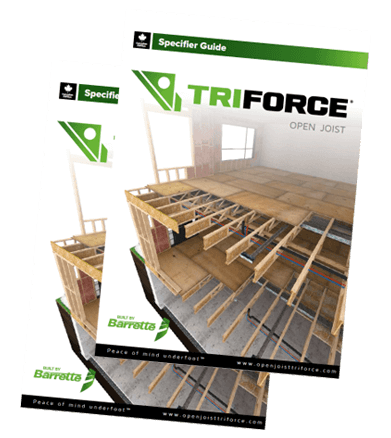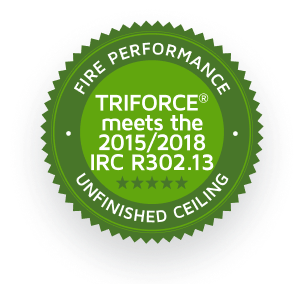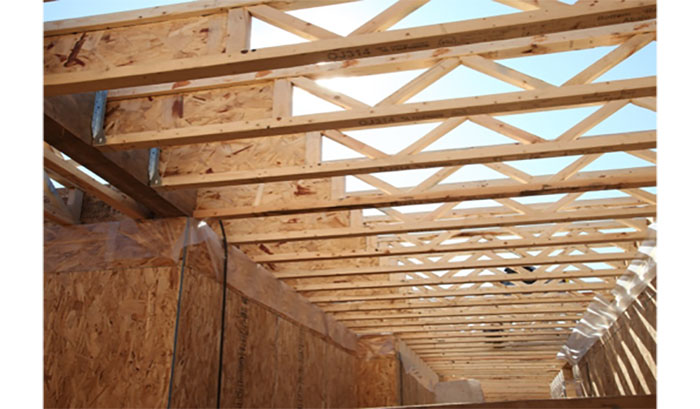Open joist TRIFORCE® falls under the category of engineered wood products (EWP). EWP has seen growing popularity since its introduction in the early 1970’s.
Engineered wood is used in framing for floor assemblies, building sheathing and roof assemblies as well as Structural Insulated panels. Its basic ingredient is a combination of wood fiber, strands or boards, and powerful adhesive for binding.
Open joist TRIFORCE®
The open joist TRIFORCE® is a combination of Kiln-dried solid sawn lumber for the top and bottom chords, as well as for its triangular webbing (hence the name TRIFORCE®). These are connected with finger joinery and structural adhesive. An OSB (Oriented Strand Board) panel is added at one end, replacing the triangular webbing to allow 24 inches of adjustability.
So how does TRIFORCE® open joist compare to dimensional lumber?
Span
The open joist TRIFORCE® has an obvious advantage here. You can order it in up to 30-foot lengths, whereas any dimensional lumber over 20 feet is difficult to find, and expensive. TRIFORCE®, therefore, allows you to build bigger open spaces without support.
Depth
While typically dimensional joists are available in 6”,8” and 12” Depths, open joist TRIFORCE® is widely available in 11 7/8”, 14” and 16” depths. Furthermore, TRIFORCE®, like all engineered wood joists, has superior load carrying ability for equivalent depth.
Cost
Dimensional lumber costs less than engineered wood, but its price can also fluctuate weekly, which makes it more difficult to budget for. Also, as you can install TRIFORCE® with greater spacing between joists (up to 24” o.c. compared to 16” o.c. for dimensional) the total price difference isn’t as great as you would think (contact us for pricing). TRIFORCE® pricing is also very stable.

Structural integrity
Because of its highly controlled manufacturing environment, TRIFORCE® is very precise and consistent. Once it is in place, it won’t crown or curve as dimensional lumber sometimes can.
Ease of use
Dimensional lumber is fairly straightforward and requires less technical knowledge to work with. TRIFORCE®, on the other hand, is lighter and easier to handle during installation.
Thanks to its lightness and strength, pound per pound, can provide more structure for less material than dimensional lumber.
Worth noting
It is also worth noting that TRIFORCE®’s triangular construction allows quick and easy installation of plumbing, electrical and HVAC. Running these through the joist won’t affect its structural integrity. Finally, keep in mind that using dimensional lumber joists represents additional costs and loss of headroom when framing these MEP elements outside the floor assembly.

